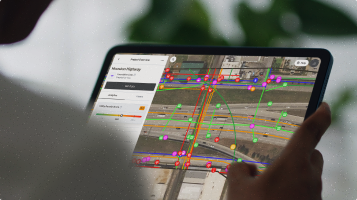Underground Utilities: All You Need to Know
Written by

Published on
July 7, 2022


Table of contents
The construction industry reached a compound annual growth rate (CAGR) of 9% in 2021 alone. But this booming industry also comes with great costs—especially when it comes to the ground beneath construction sites. Billions of dollars are spent every year to find underground utilities, and the costs of NOT finding utilities is even higher—from accidental line strikes and damages, to lawsuits and health and safety risks.
That is why this industry sector desperately needs to get in step with modern times—and that includes underground utilities.
The utilities beneath the surface is what allows everything above the surface to operate—and here is everything you need to know about that underground infrastructure.
What are Underground Utilities?
Underground utilities are all the elements of public and private infrastructure built below the ground. They include gas and oil pipelines, sewers and drainage systems, water mains, electric cables, and telecommunication lines.
Some of the earliest underground utilities included tunnels, water, and plumbing systems in the most advanced cities of the ancient world. But the vast majority of underground utilities were built since the mid-19th century, when the first modern cities built water and sewer systems underground to improve living conditions and health. Later, the development of electricity and mass media required vast networks connecting cities and villages across countries and around the world. And as the population has grown, so has the need for utilities—as well as the risks they bring.
In the past, some utilities were placed above ground to save on installation costs and labor. But today, more companies are finding value in placing utilities underground as they start to account for safety and longevity, not to mention aesthetics.
Building these services underground makes them much more resilient to environmental forces, and also prevents them from causing damage to nearby property, resources, and people. Take overhead power lines: they can easily cause forest fires or extensive power outages during hurricanes or storms. Placing utilities underground also makes them more secure in terms of cyberattacks, tampering, theft, and sabotage.
Hence, the most secure option for everyone is when these utilities are underground.
Why are Underground Utilities Important?
Underground utilities are what connect societies. Without them, the world cannot function properly. Underground water lines supply every household and company with clean and safe drinking water.
Power lines give people electricity, which is the basis for almost everything we do today. Plus, telecommunication and data cables are what make it possible for us to even read this article!
As you can see, it is important to find exactly where these underground utilities are located to avoid striking them. One mistake from a construction company can take away vital services from whole neighborhoods or more.
Why Do We Need Underground Utility Mapping?
Utility locating and utility mapping are extremely important nowadays. Maybe in the past, people could go without a few days of power or internet, but today this would be unthinkable for most modern workers.
With the boom in construction, the need for reliable subsurface information about underground utilities has never been more significant. Combining this sector with the technology available today can help to fill that demand. Currently, the construction industry is in great need of better tools and digital systems to fulfill project commitments safely, efficiently, and profitably.
Thus, the need for fast and accurate utility mapping is ever-increasing!
4M Analytics is now making utility mapping a possibility—for the first time across the entire market and at scale.
We use AI, computer vision, and remote sensing to pinpoint the location of all utilities built below our feet. Using a combination of aerial and satellite photos, we construct reliable and comprehensive maps of underground utilities and keep the data up-to-date.
Our map is also the perfect tool for route planning, utility verification, land assessments, and many other construction project needs, saving time and money.
We are building a utility map—the tool that will bring the AEC sector into the 21st century. No more delays, unnecessary relocations, or costly strikes—with 4M Analytics, you’ll finally have the key you need to unlock the underground!
Recent blog posts

Our Newsletter
Join 7k infrastructure professionals
Get monthly insights on ways to build smarter, faster and safer with Utility AI.

.avif)




